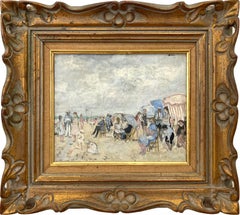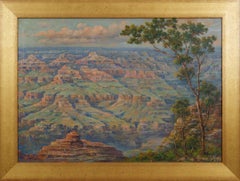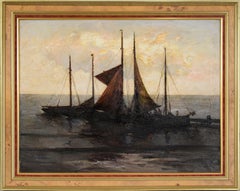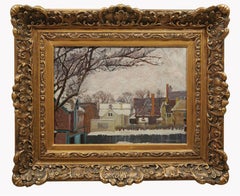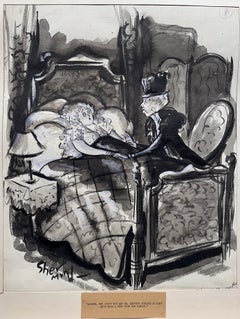Figurative Paintings
1940s Impressionist Figurative Paintings
Canvas, Oil
1940s Figurative Paintings
Oil
1940s Impressionist Figurative Paintings
Canvas, Oil, Stretcher Bars
1940s Figurative Paintings
Oil
1940s Impressionist Figurative Paintings
Canvas, Oil
1940s Realist Figurative Paintings
Gouache
1940s Figurative Paintings
Canvas, Oil
1940s Realist Figurative Paintings
Masonite, Canvas, Oil
1940s Expressionist Figurative Paintings
Oil, Board
1940s Contemporary Figurative Paintings
Oil, Masonite
1940s American Modern Figurative Paintings
Linen, Oil
1940s Post-War Figurative Paintings
Canvas, Oil
1940s American Modern Figurative Paintings
Board, Oil
1940s Tribal Figurative Paintings
Paint, Paper
1940s Tribal Figurative Paintings
Paint, Paper
1940s Impressionist Figurative Paintings
Oil
1940s Figurative Paintings
Oil
1940s American Impressionist Figurative Paintings
Oil
1940s Impressionist Figurative Paintings
Oil, Panel
1940s Realist Figurative Paintings
Paper, Charcoal, Ink, Gouache, Pencil
1940s Academic Figurative Paintings
Canvas, Oil
1940s Modern Figurative Paintings
Canvas, Oil
1940s American Modern Figurative Paintings
Canvas, Oil
1940s Art Deco Figurative Paintings
Gouache
1940s American Modern Figurative Paintings
Canvas, Oil
1940s American Modern Figurative Paintings
Tempera, Board
1940s American Modern Figurative Paintings
Canvas, Oil
1940s American Modern Figurative Paintings
Canvas, Oil
1940s Surrealist Figurative Paintings
Linen, Oil
1940s Figurative Paintings
Masonite, Oil
1940s American Modern Figurative Paintings
Oil Crayon
1940s American Modern Figurative Paintings
Oil, Board
1940s Figurative Paintings
Oil
1940s American Modern Figurative Paintings
Oil, Masonite
1940s American Realist Figurative Paintings
Canvas, Oil
1940s Abstract Figurative Paintings
Paper, Gouache
1940s American Modern Figurative Paintings
Masonite, Oil
1940s Expressionist Figurative Paintings
Oil, Panel
1940s American Realist Figurative Paintings
Canvas, Oil, Board
1940s Contemporary Figurative Paintings
Oil
1940s Modern Figurative Paintings
Oil
1940s Art Deco Figurative Paintings
Canvas, Paint, Oil
1940s American Modern Figurative Paintings
Gouache
1940s Impressionist Figurative Paintings
Oil, Board
1940s Surrealist Figurative Paintings
Linen, Oil, Stretcher Bars
1940s Modern Figurative Paintings
Canvas, Oil
1940s Figurative Paintings
Oil
1940s American Modern Figurative Paintings
Oil, Panel
1940s American Realist Figurative Paintings
Canvas, Oil
1940s Expressionist Figurative Paintings
Oil, Cardboard
1940s American Realist Figurative Paintings
Paper, Ink, Watercolor
1940s Futurist Figurative Paintings
Canvas, Oil, Stretcher Bars
1940s Hudson River School Figurative Paintings
Oil, Illustration Board, Stretcher Bars
1940s Abstract Expressionist Figurative Paintings
Canvas, Oil
1940s American Modern Figurative Paintings
Canvas, Oil
1940s American Impressionist Figurative Paintings
Canvas, Oil
1940s American Impressionist Figurative Paintings
Oil, Linen
1940s Academic Figurative Paintings
Oil, Board
Figurative Paintings for Sale
Figurative art, as opposed to abstract art, retains features from the observable world in its representational depictions of subject matter. Most commonly, figurative paintings reference and explore the human body, but they can also include landscapes, architecture, plants and animals — all portrayed with realism.
While the oldest figurative art dates back tens of thousands of years to cave wall paintings, figurative works made from observation became especially prominent in the early Renaissance. Artists like Michelangelo, Leonardo da Vinci and other Renaissance masters created naturalistic representations of their subjects.
Pablo Picasso is lauded for laying the foundation for modern figurative art in the 1920s. Although abstracted, this work held a strong connection to representing people and other subjects. Other famous figurative artists include Francis Bacon and Lucian Freud. Figurative art in the 20th century would span such diverse genres as Expressionism, Pop art and Surrealism.
Today, a number of figural artists — such as Sedrick Huckaby, Daisy Patton and Eileen Cooper — are making art that uses the human body as its subject.
Because figurative art represents subjects from the real world, natural colors are common in these paintings. A piece of figurative art can be an exciting starting point for setting a tone and creating a color palette in a room.
Browse an extensive collection of figurative paintings on 1stDibs.
Read More
See Kent Monkman’s Magical Realist Take on Frontier History
With a solo show at the Denver Art Museum and a commission from the Met, the Cree Canadian painter has become an international sensation.
Cecilia Vicuña Merges Politics, Science and Spirituality in Her Poetic Art
The Chilean creator, who has been living in exile in New York for decades, is having a major moment, receiving the biggest exhibitions, commissions and awards an artist could dream of.
